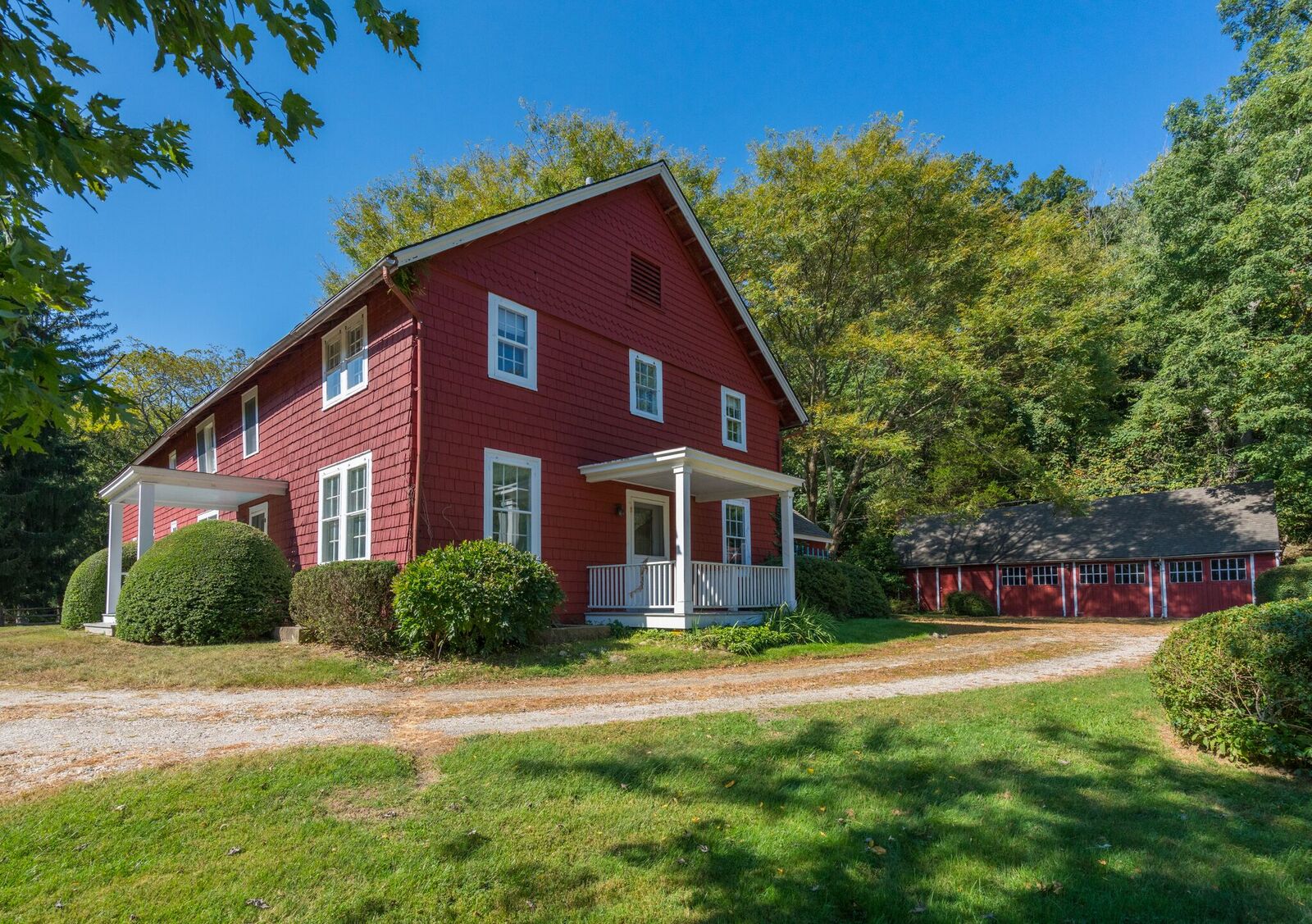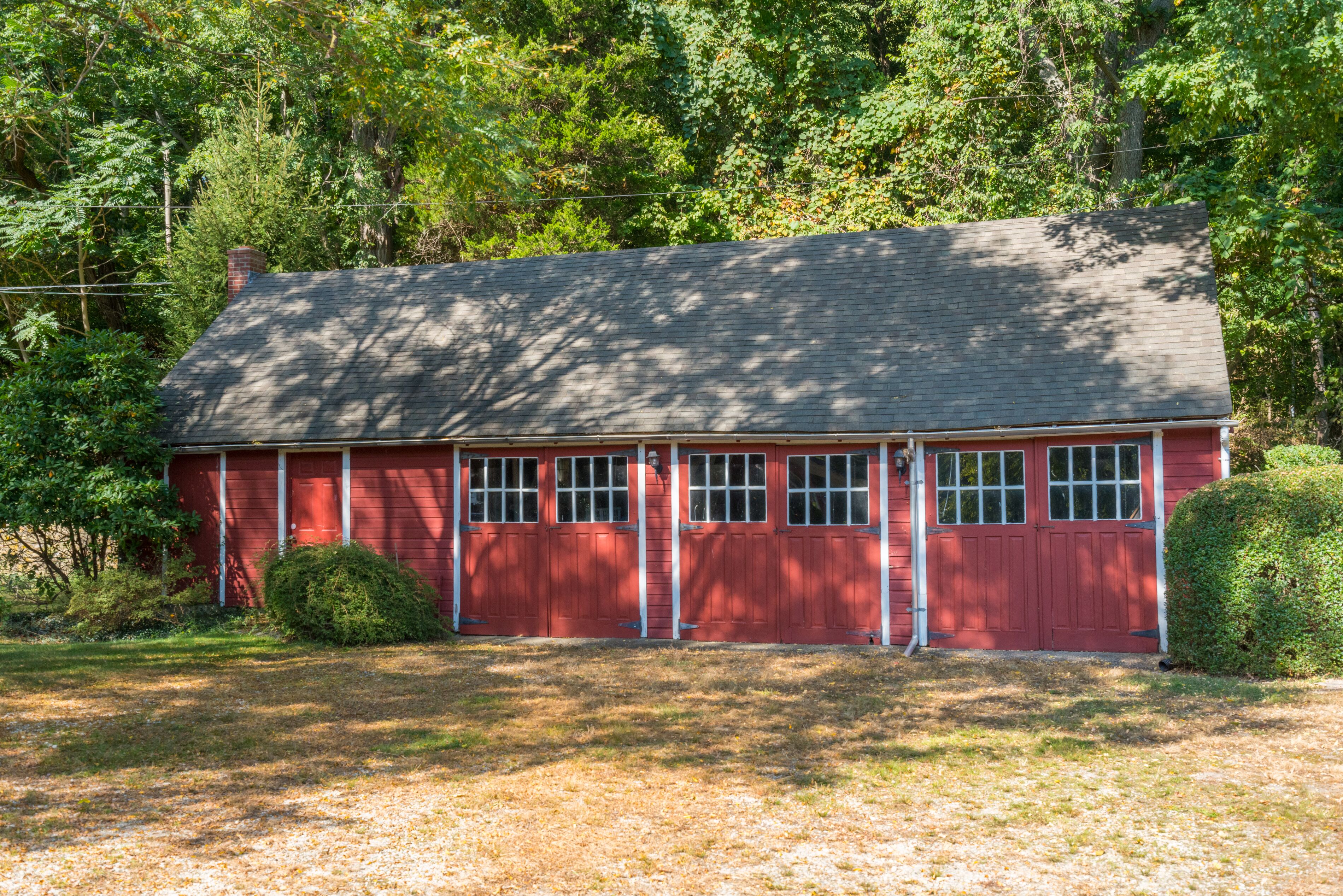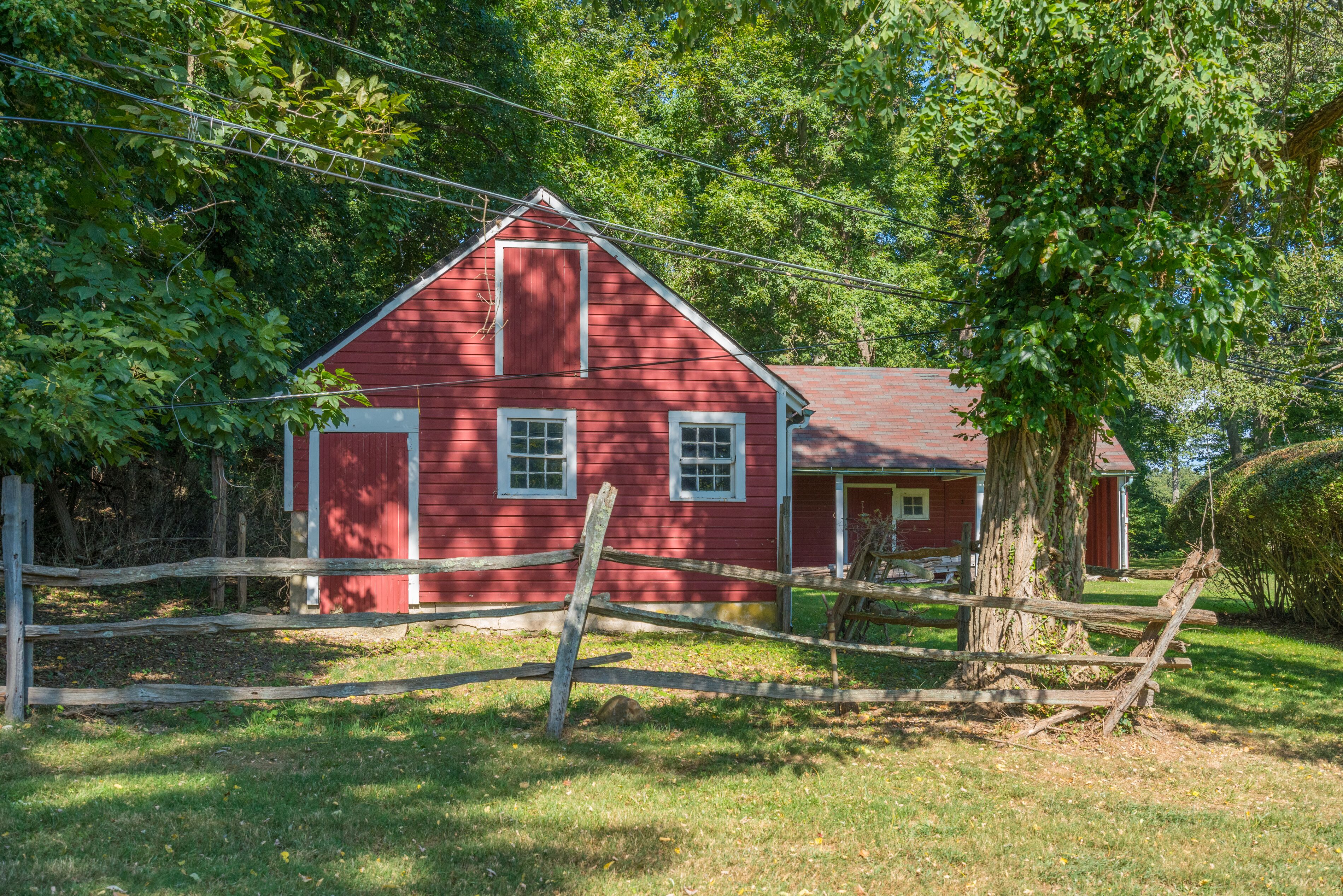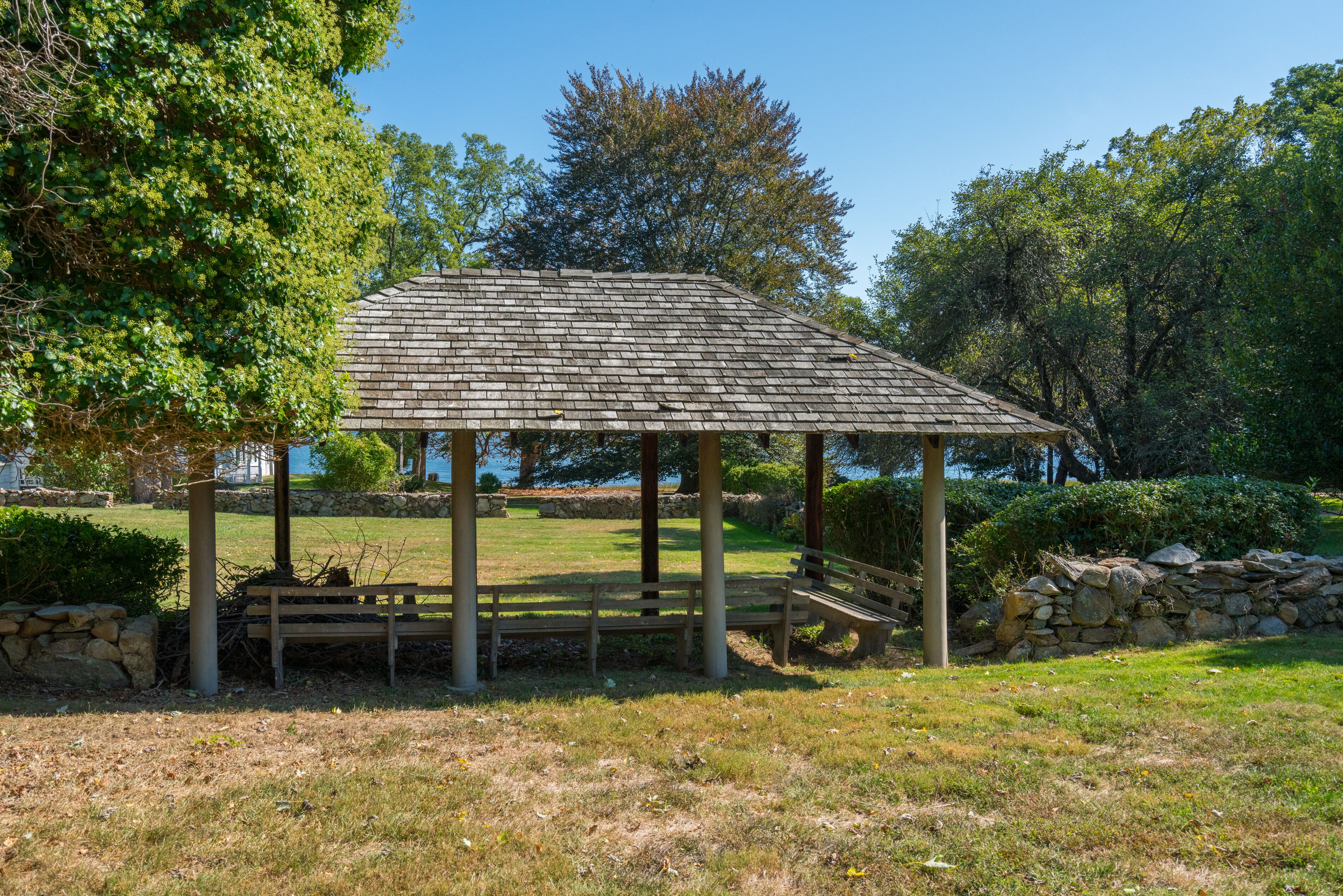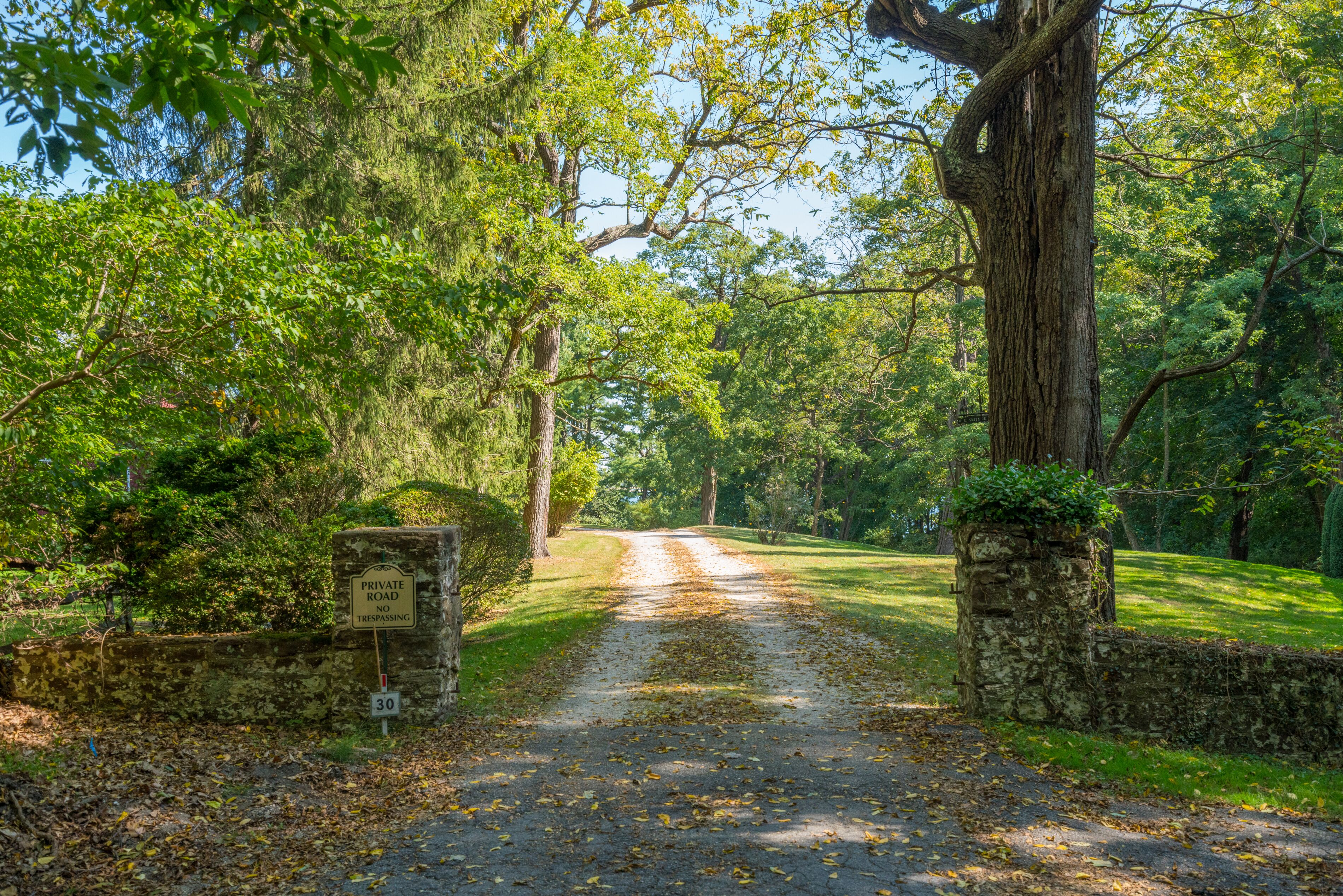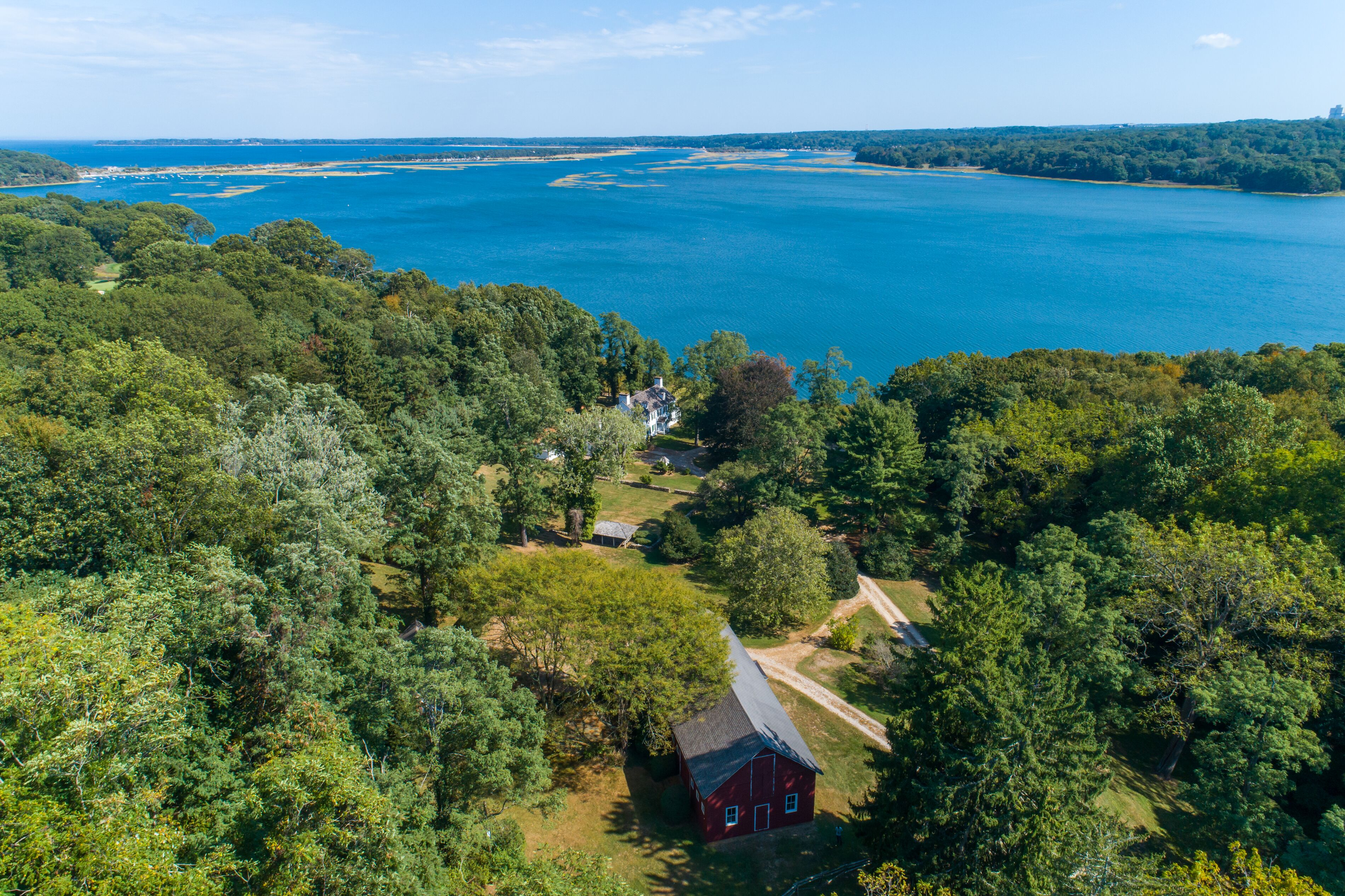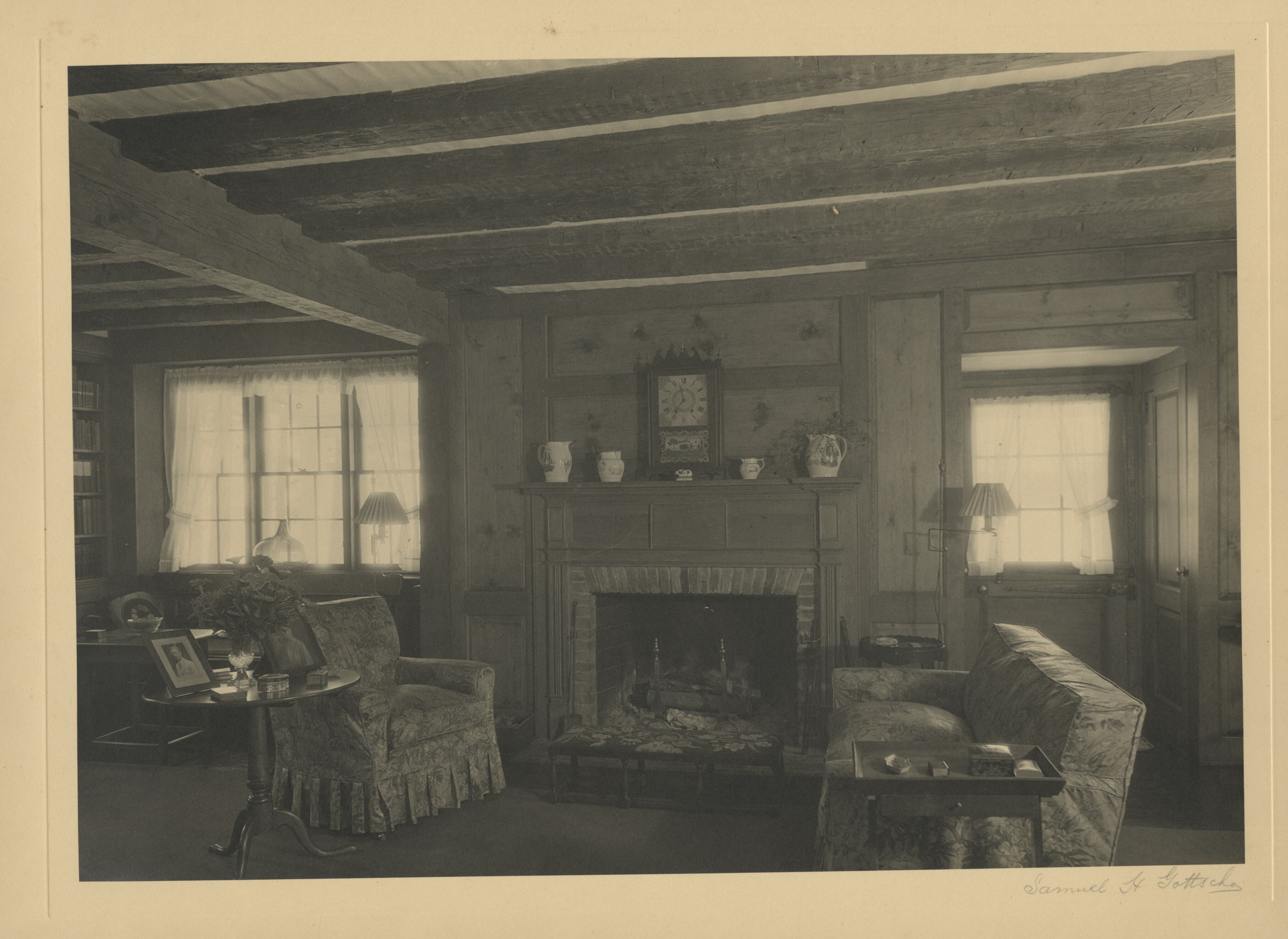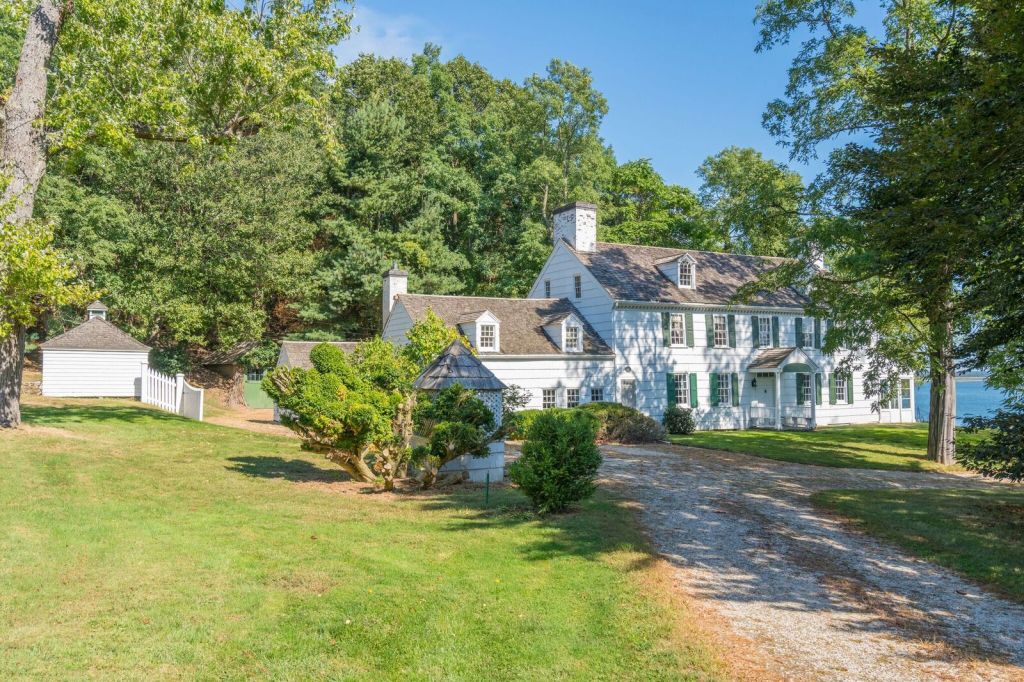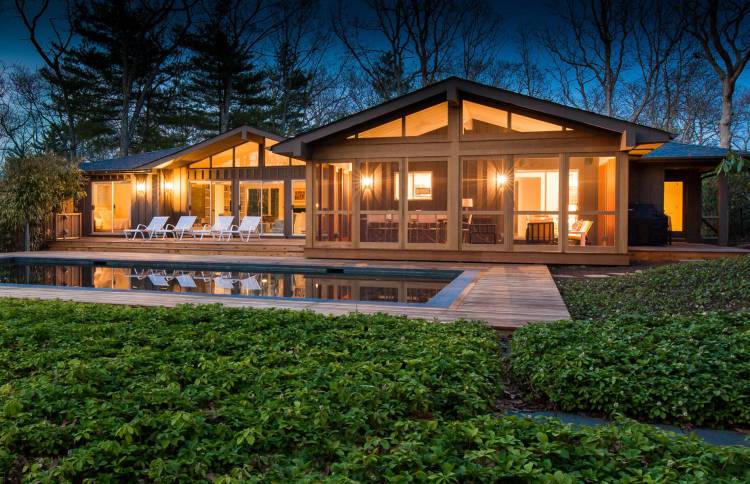You can’t judge a book by its cover, or for that matter, an intriguing waterfront country house wrapped in layers of history, that can use a good dose of TLC.
In the market for a slice of old-world Americana? Look no further than this rare colonial charmer, which started out as a homestead back in the 17th century and embodies more than five generations of close-knit family ownership at 30 Smith Lane in Nissequogue. For passionate historic home lovers, it’s a rare opportunity to put your stamp on a beautiful estate near the edge of Stony Brook Harbor.
“The home is on 19 waterfront acres [embellished with ancient specimen plantings] in the tranquil Village of Nissequogue,” notes listing agent Mickey Conlon of Douglas Elliman Real Estate.
“Originally built in 1687 for Ebenezer Smith, the grandson of Smithtown’s patentee Richard ‘Bull’ Smith, the home has been in the Smith family for over 300 years, only briefly changing hands when the Dixons [Mr. and Mrs. William H. Dixon] purchased the house in 1924 and engaged architect Archibald Brown to supervise its renovation,” Conlon adds. “It returned to the Smith family in 1970 when Malcolm E. Smith Jr. purchased the estate back from the Dixon family.”
The house and property are being sold for $2,495,000 by the estate of Malcolm E. Smith Jr., who was a direct descendant of Smithtown’s founder, serving as trustee of the Village of Nissequogue, and later as its mayor.
As Ebenezer’s family grew, his dad, Richard Smith II, expanded the original homestead and added a larger dwelling sometime between 1712 and 1742, according to Colonel Rockwell’s Scra-pbook.
“It was an example of architectural progression in this burgeoning community, whose homes still lacked flourishes such as dormers and welcoming porches,” writes Kyle Marshall in his new book Americana: Farmhouses and Manors of Long Island. “Within a few decades the main section was again expanded to a full five-bay length, bookended by the original chimney stack and a new eastern chimney.”
During the 19th century, a wraparound porch provided a wonderful spot to take in views of the shimmering bay. All else stayed the same until the house was purchased by Dixon, who sought a smart Long Island farmhouse which would echo the style of the island’s colonial-era homestead houses, favoring gentility and economy in equal measure, according to the book.
“He commissioned Peabody, Wilson & Brown to discreetly insert modern conveniences and light Colonial Revival flourishes. The involvement of practicing architects, rather than talented builders or gentlemen designers, was a fairly new phenomenon on the island,” Marshall writes, noting that the home’s simplicity and atmosphere guided the architects, who preserved much of the dining room paneling and created a new sitting room while keeping the unusual, charming staircase in the center hall. And the exterior received a full Colonial Revival touch-up; fashionable and practical dormer windows were also added, he continues.
The house is notable for the mellow pine wainscoting and a built-in cupboard with sunburst carving in its domed interior as well as for its romantic location overlooking the harbor, with a distant view of Long Island Sound and the property’s beautiful box bushes and well-kept lawns, according to Colonel Rockwell’s Scrap-book.
Surprisingly, many of the original details have remained intact, including the great fireplace that was the heart of the oldest part of the house, the dining room paneling, and the hearth and bread oven original to the 1687 structure, one of five working fireplaces, according to Conlon. He points out that the home needs a full restoration.
Picture this: At one time, its cozy rooms where families lived and gathered exuded comfort, warmth, and familiarity. Imagine all the antique bric-a-brac on display, those family heirlooms, and practical period furnishings.
“Its last major renovation was in 1924, and the bathrooms from that period remain, though other upgrades to the plumbing, heating, and electrical systems have been made since,” Conlon says, adding, “The exterior is shingled with period shutters and a cedar shake roof.”
The Tom Postilio & Mickey Conlon Team agree that this special, 5-bedroom, 4-bathroom home — which isn’t far from the main drag — is a true find.
“Nissequogue and its sister village, Head of the Harbor, are conveniently located near the quaint hamlet of St. James, where a variety of charming boutiques and superb restaurants are frequented by locals and visitors alike,” Conlon notes. “More mainstream shopping options are available nearby in Smithtown, and the Smith Haven Mall is only a couple of miles outside of town.”
Recreational attractions include the Nissequogue Golf Club, Silver Oak Stable, and St. James General Store. Long Island Macarthur is the closest airport.
“A long road runs through a dense woods, heightening the moment when a small rise opens up to fields and lawn that cascade down to the beach and bay beyond,” Marshall writes. “A graveled lane rolls down this landscape and passes a scattered village of barns, garages and stables before quickly ending in front of the house.”
Like a great work of art and its noteworthy provenance, the home’s value is greatly enhanced due to its historical significance.
And, with a bit of imagination and hard work, a maverick, design-savvy homeowner with a vision can gradually transform this old house into an inviting showplace, while creating their own family’s legacy.
For more information, contact The Tom Postilio & Mickey Conlon Team – Licensed Associate Real Estate Brokers of Douglas Elliman Real Estate at 212-350-8008, 212-350-8009, 917-224-7177, or 917-543-0005.